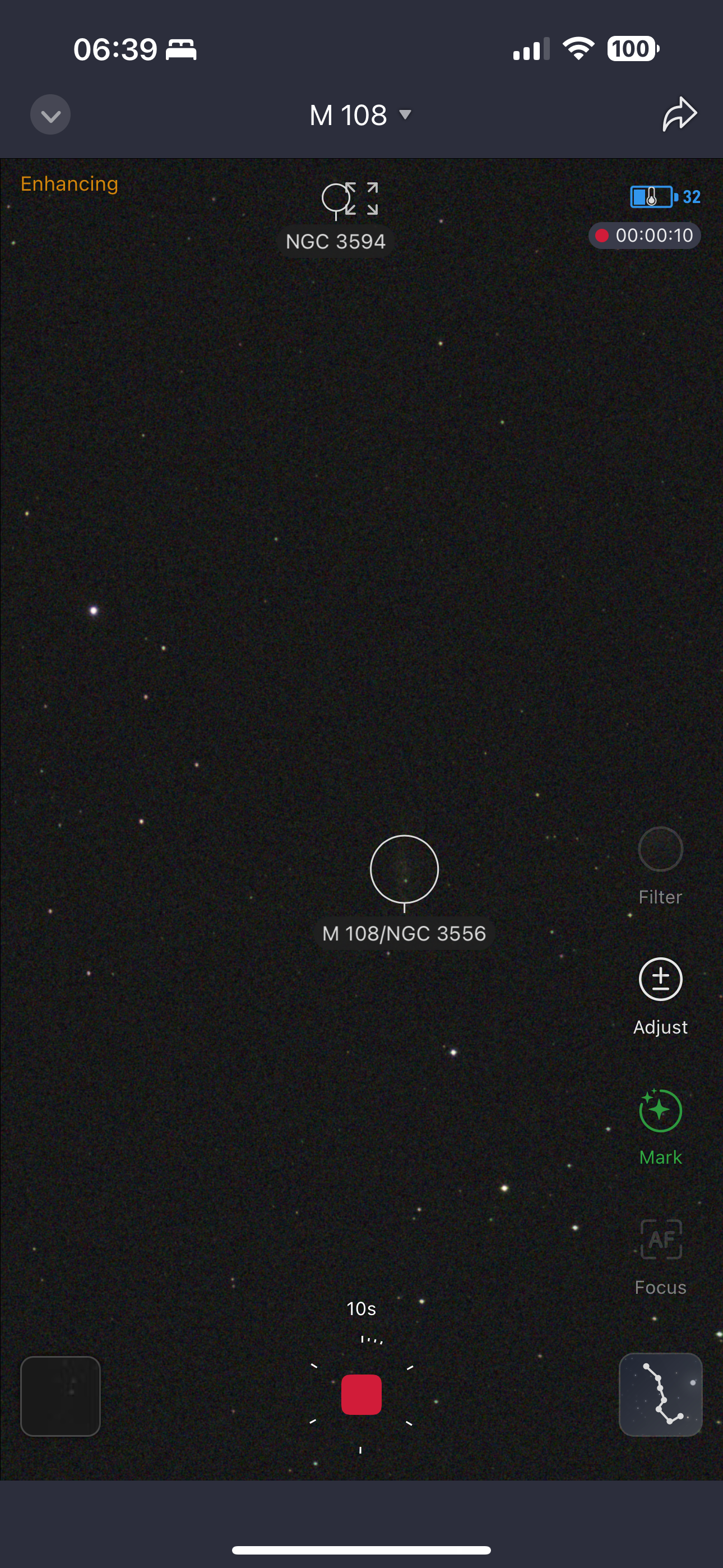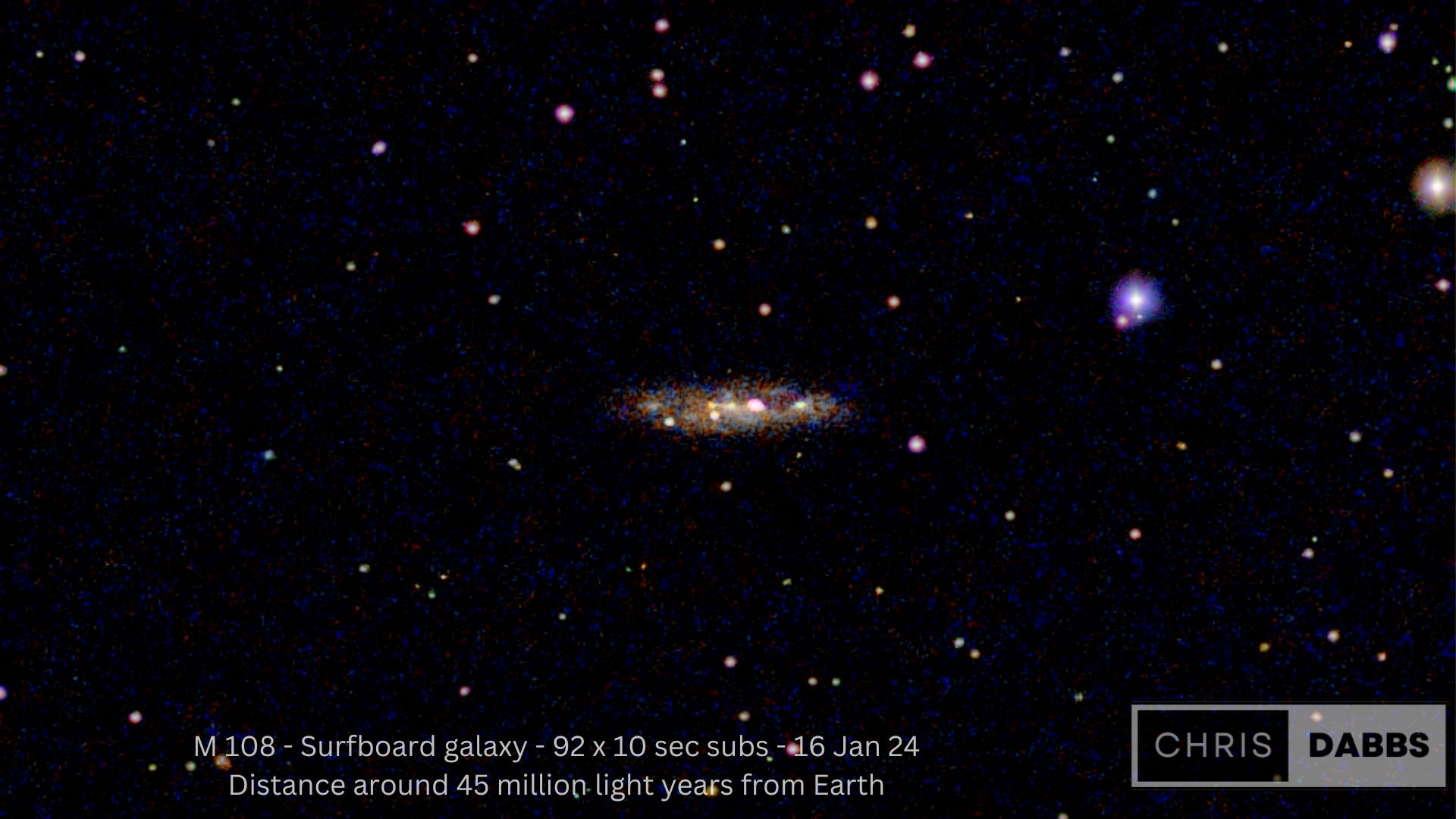
I'll need to take some more subs and increase the definition!
In the meantime...
M108, also known as the Surfboard Galaxy, is a stunning spiral galaxy located in the constellation Ursa Major. It sits at a distance of approximately 45 million light-years from Earth, making it a challenging target for amateur backyard astronomers to capture in detail.
One of the main challenges in photographing M108 is its considerable distance from our planet. The farther away an object is, the dimmer it appears from our vantage point. This means that capturing clear and detailed images of M108 requires specialized equipment, such as telescopes with large apertures and high-quality cameras with long exposure capabilities. Amateur astronomers often face difficulties in obtaining the necessary equipment to effectively photograph distant galaxies like M108.
Additionally, M108's relatively low surface brightness adds to the difficulty for amateurs. Surface brightness refers to the amount of light per unit area emitted by an astronomical object. In the case of M108, its low surface brightness makes it challenging to distinguish the galaxy's intricate spiral arms and delicate details from the surrounding dark sky, especially with the limited exposure time and equipment that amateur astronomers typically have at their disposal.
Another factor that adds to the complexity of capturing M108 is light pollution. Many amateur astronomers struggle with light pollution from surrounding urban areas, which can significantly reduce the contrast and visibility of distant celestial objects like the Surfboard Galaxy.
Despite these challenges, with patience, dedication, and the right equipment, amateur backyard astronomers can still enjoy observing and photographing M108. Collaborating with local astronomy clubs or seeking dark sky locations can greatly improve the chances of capturing stunning images of this captivating galaxy.
In conclusion, M108, the Surfboard Galaxy, presents a rewarding but challenging subject for amateur backyard astronomers to photograph due to its considerable distance from Earth, low surface brightness, and the presence of light pollution. Nonetheless, with the right resources and perseverance, capturing the beauty of M108 can be a truly gratifying experience for enthusiasts of all levels.




